Arts and Crafts
Oxfordshire Artweeks: Running every May, Oxfordshire Artweeks opens up studios and galleries - many of them in the artists' own homes, which gives you an opportunity to see some truly stunning and unique settings. The event takes place across Oxfordshire, running a range of exhibitions and events so wide that there's sure to be something to appeal to everyone. The Artweeks programme includes everything from painting and sculpture to jewellery, textiles and digital art, with demonstrations from artists and the occasional opportunity to have a go yourself. Best of all, every exhibition is free to visit, and makes for a fascinating and unique day out. See here for reviews of past Artweeks exhibitions, or have a look at what's coming up this year.
Old Fire Station: The exhibitions by visiting professional artists held at the Old Fire Station are always worth a visit, but Daily Info also recommends looking at the regularly-featured artwork by the homeless and vulnerable people who take the OFS's wide range of art classes.
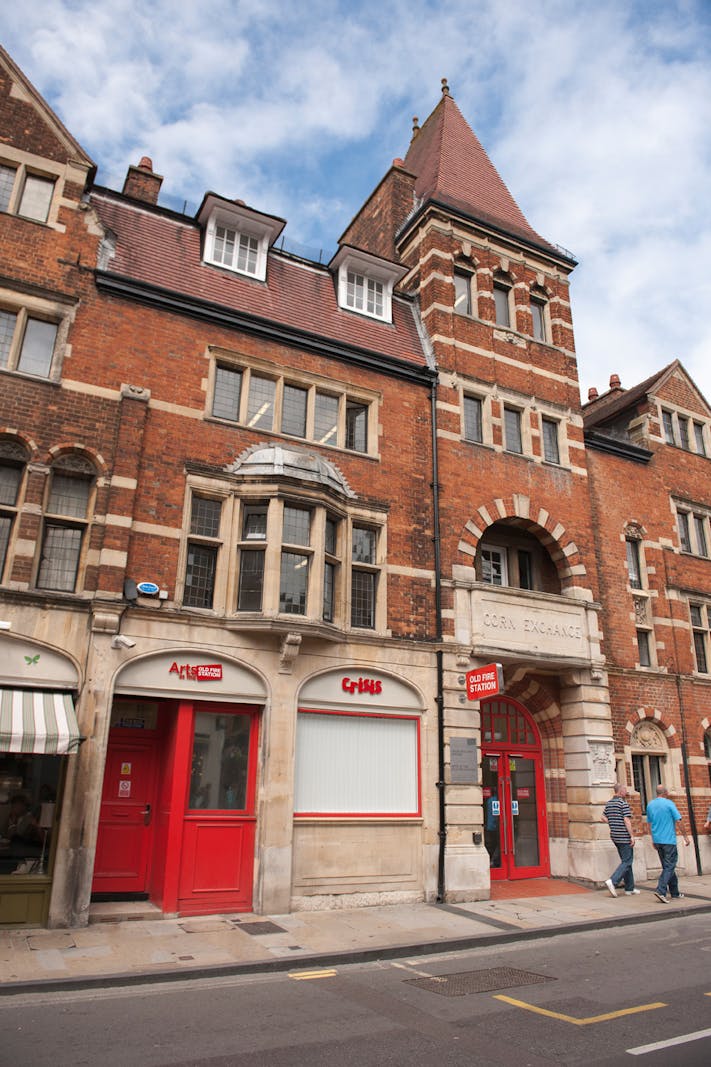
Yarn Bombing: What are those knitted flowers doing around the Radcliffe Camera? Why is that lamppost dressed in a single legwarmer? The answer is simple - Oxford's knitting groups have taken to yarn bombing.
Originating in Texas in 2005, yarn bombing involves knitting and crocheting pieces that are then placed in public spaces, acting like a kind of homespun, non-damaging graffiti. Yarn bombers have done everything from knitting clothes for statues to covering bikes and cars in vehicular bodysuits. Knitters often carry out yarn bombing for charity, and Oxford's groups are no exception - Oxford Drunken Knitwits yarn bombed the Radcliffe Camera with knitted flowers that encouraged people to donate to the mental health charity Mind.
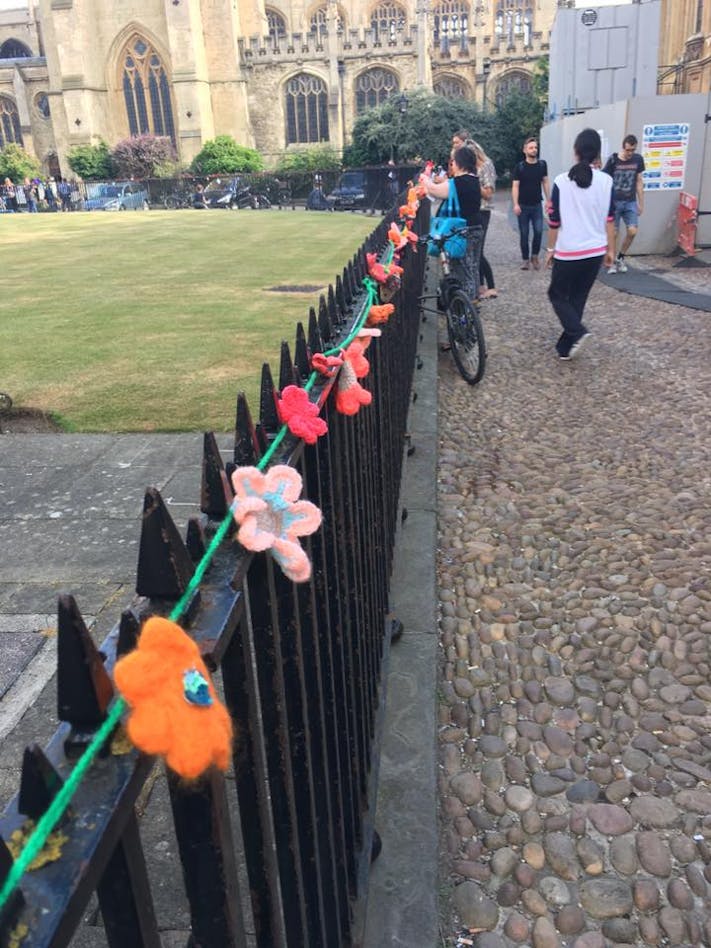
If reading about yarn bombing has made you want to reach for the wool and needles, Oxford has several social knitting groups that meet regularly, often in one of the city's many pubs. Try Drunken Knitwits, Stitch and Chat, Oxford Social Knitwork, or any of the many others.
Murals and Graffiti Art
Although not strictly public, the Pre-Raphaelite murals in the Old Library at the Oxford Union are well worth a visit. Painted in the late 1850s by such illuminaries as Dante Gabriel Rossetti, William Morris and Edward Burne-Jones, the murals show scenes from the legends of King Arthur, underneath the typically floral-patterned William Morris ceiling. Visitors can come and see the murals during the library's open hours, for the low fee of £1.50.
Cowley Road also plays host to some striking murals, although these are of a distinctly more modern flavour than the ones you'll find in the Old Library. This area of Oxford has put a huge emphasis on street art as a way to express and celebrate the local community, as can be seen on their dedicated street art page. Have a look at Andrew Manson's mural on the corner of Stockmore Street, or hunt along the road to find other contributions to Cowley's street art, like the impressive painting of a floating Radcliffe Camera at Moberly Close. Don't forget to wave at the octopus (and the Daily Info team!) as you pass Brewdog!
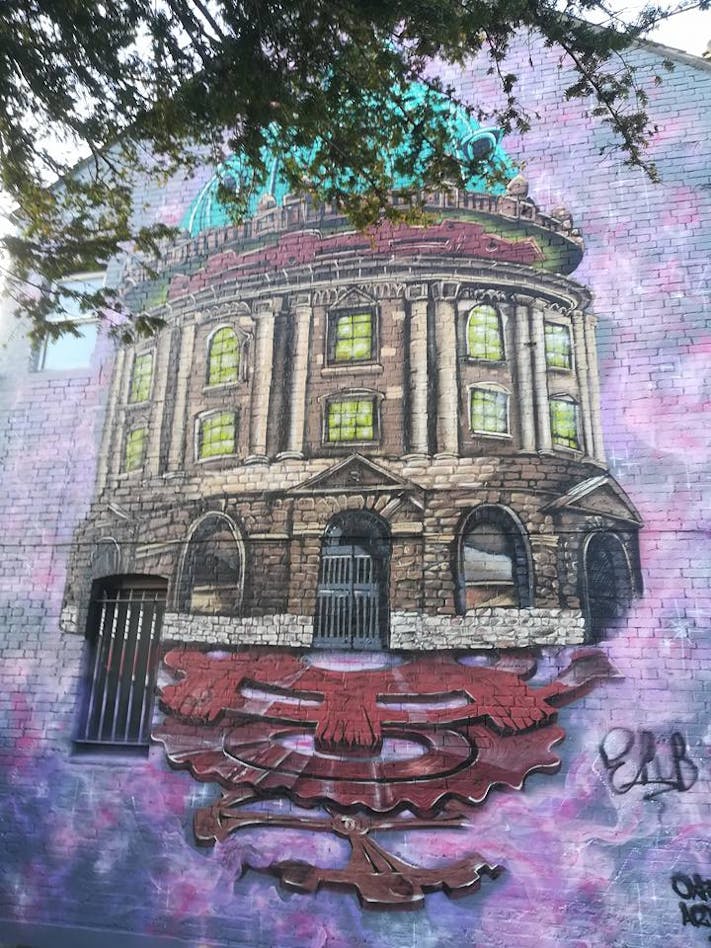
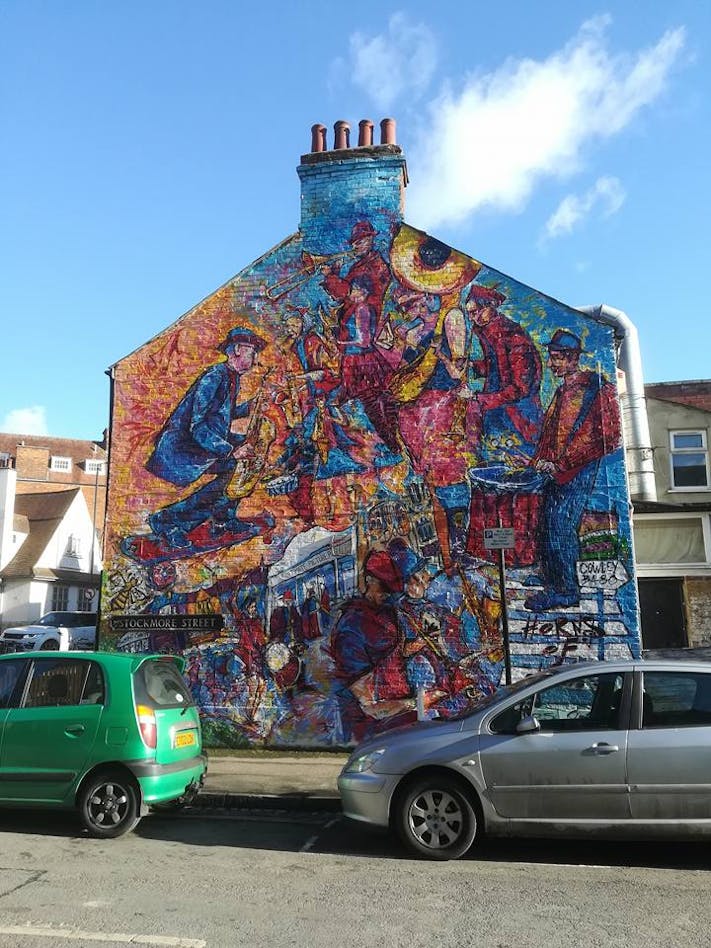
Stay on Cowley Road, and have a quick glance at the window of Oxford's own comic book shop, Inky Fingers. Sometimes you'll see some window art from The Phoenix's cartoonists.
Statues
Who's the dapper gentleman standing outside the Bodleian Library? That's William Herbert, the 3rd Earl of Pembroke, who was Chancellor of Oxford University and founder of Pembroke College. Herbert has a colourful, Shakespearian history - Shakespeare's First Folio was dedicated to him, and he had an affair with Mary Fitton, possibly the 'Dark Lady' of Shakespeare's famous sonnet. Herbert himself may be Shakespeare's 'Fair Youth', although if so, his statue was clearly based on him in more mature years.
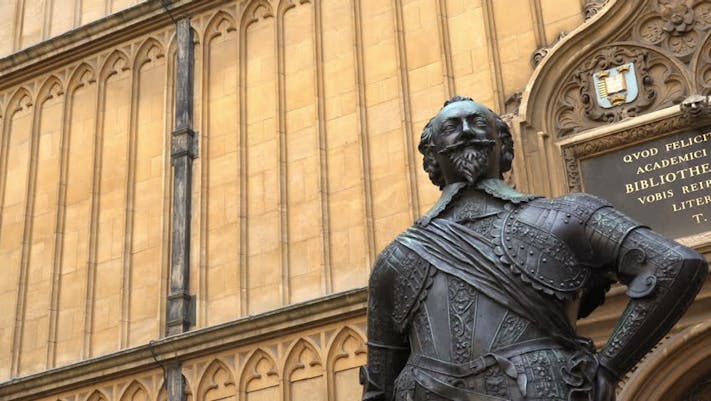
Just as grand as Pembroke, but with a scientific rather than literary connection, the statues in the court of the Oxford Museum of Natural History are well worth a visit. Intended to be a 'cathedral to science', the museum features statues of Aristotle, Charles Darwin, Isaac Newton, and many others. Sadly, the fact that these statues were commissioned and sculpted in the 19th century means that the famous women of science are notable by their absence.
If your tastes are more modern, head up Broad Street and look above Blackwell's Art and Music shop. Standing on the edge of the building is The Iron Man by Antony Gormley, a seven-foot-tall bronze statue installed in 2009. Officially owned by Exeter College, the statue was placed above the street so that it could be shared with the public, and, according to Gormley himself, "[make] casual passers-by...ask, ‘What is that naked iron bloke doing up there?’, for which I hope there will never be a single satisfactory answer."
Gargoyles and Grotesques
There are nightmares lurking under the dreaming spires. Oxford has a gorgeously ghoulish collection of gargoyles and grotesques, which have spend the last few centuries hanging around the colleges and staring down at generations of students. Oxford's gargoyles feature on postcards and in statues in the majority of the city's gift shops, and there are some regular favourites - including an unhappy-looking chap who, it's widely agreed, seems to be suffering after a long night in the city's pubs.
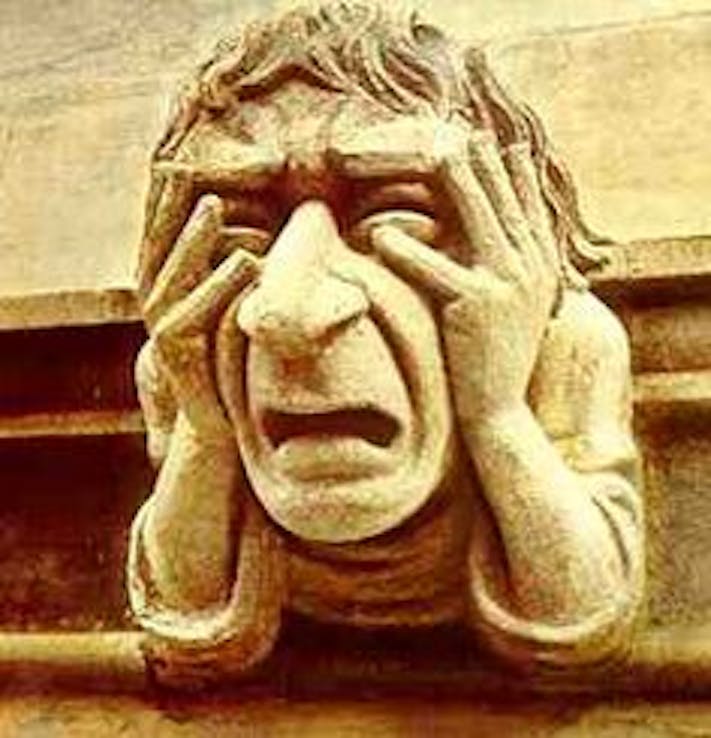
What's the difference between a gargoyle and a grotesque?
Gargoyles are, effectively, part of the guttering - every gargoyle has a spout for draining water off the roof of the building. Grotesques look very similar to gargoyles, but have no spout, and don't drain water from roofs.
Apart from drainage, what are they for?
Although we now see them mostly as decoration, gargoyles and grotesques have also traditionally been placed for protection - their scary designs were intended to ward off demons and other forces of evil.
Under Your Feet
Cowley Road: There's plenty to distract you when you're walking up Cowley Road - the murals, the many food shops, or, sometimes, an entire carnival - but don't forget to watch where you're stepping. Dotted all along Cowley Road are plaques featuring everything from feminist symbolism to chemical equations by way of poetry and parables about starfish. Spearheaded by artist Liam Curtin, the bronze designs tell a cultural and character history of Cowley Road, with the thinking behind them detailed on Curtin's website. A catalogue of Cowley's 'pavement jewellery' can be found here - why not see how many you can spot in real life?
Cornmarket Street: Visit Cornmarket Street at the right time, and you might see some street art. Often home to displays of chalk drawings, paintings, or embroidery by several of Oxford's homeless residents, Cornmarket Street can almost feel like an outdoor art gallery at certain times.
St Giles' Church: Need a moment of quiet contemplation amid the hustle and bustle of the city centre? Outside St Giles' Church, there's a stone labyrinth, where visitors are encouraged to walk and pray, meditate, or simply take a breather. A description of the labyrinth and how to use it can be found here.
Modern and Metaphysical
Art-lovers in Oxford can visit Mark James' Sorcery exhibition, a conceptual series where the artist installs spheres of 'pure space' in a variety of locations. Four of these spheres, named 'The Eternal Attractions', are unofficially installed in Modern Art Oxford; you can find - or not, as the spheres are both invisible and intangible - a pair in each of the two rooms on the first floor of the museum. Another four spheres, 'The River Watchers', can be found by the riverside path at Pinkhill Lock, although the exact locations of this set of spheres is, understandably, rather difficult to pinpoint. More information on the Sorcery exhibit can be found on the artist's website. Visit now! Or at any time, as they are, after all, eternal.



